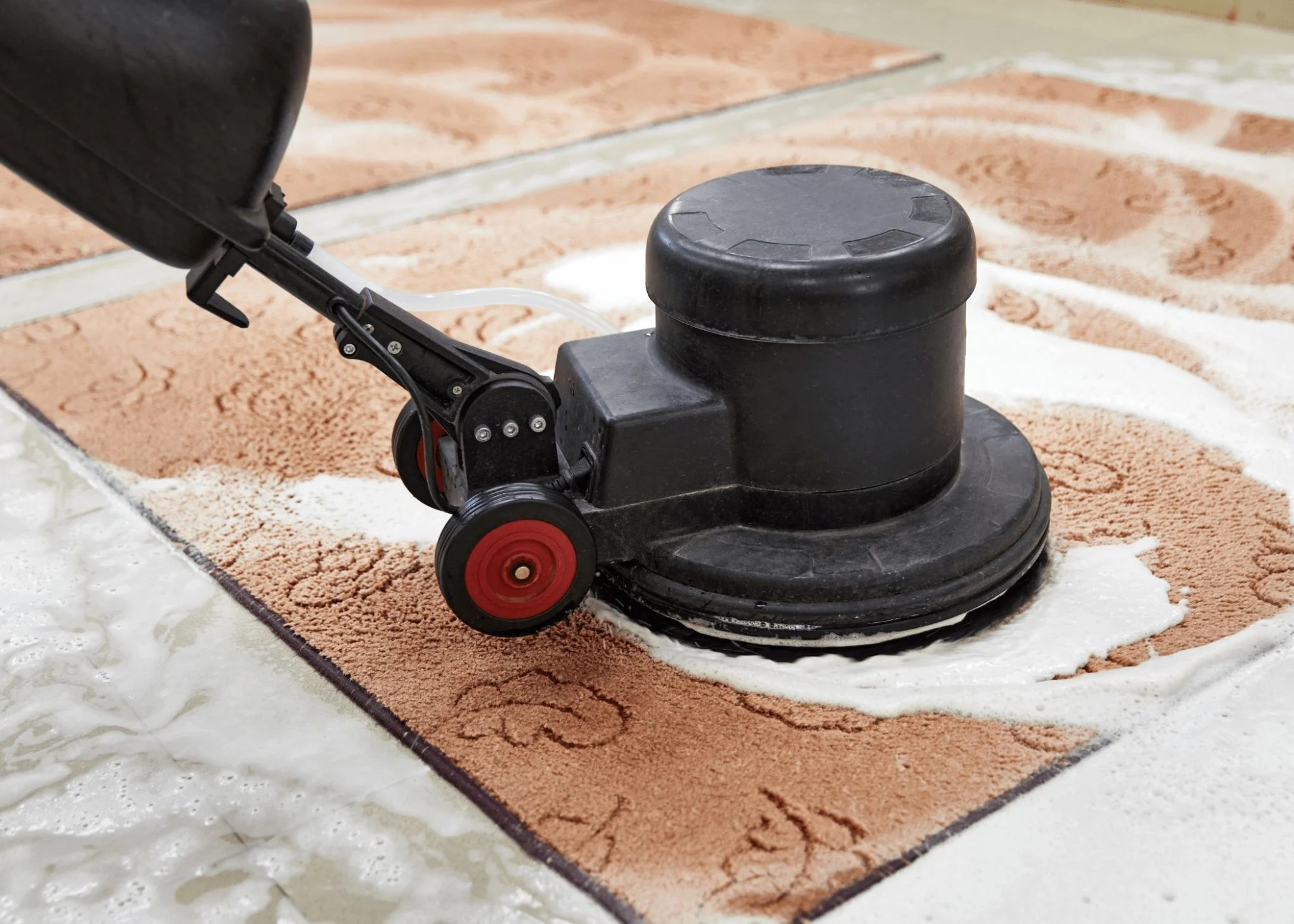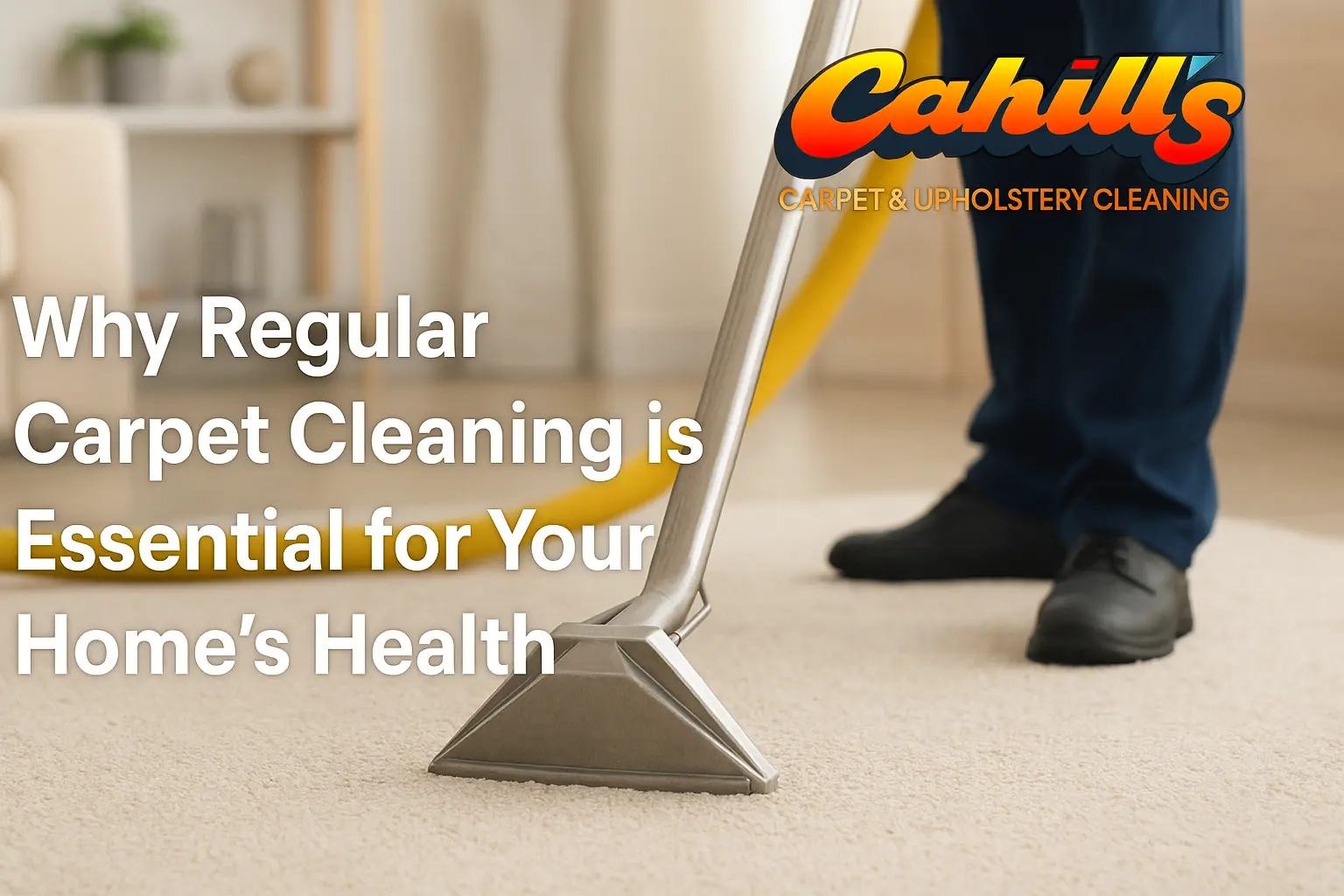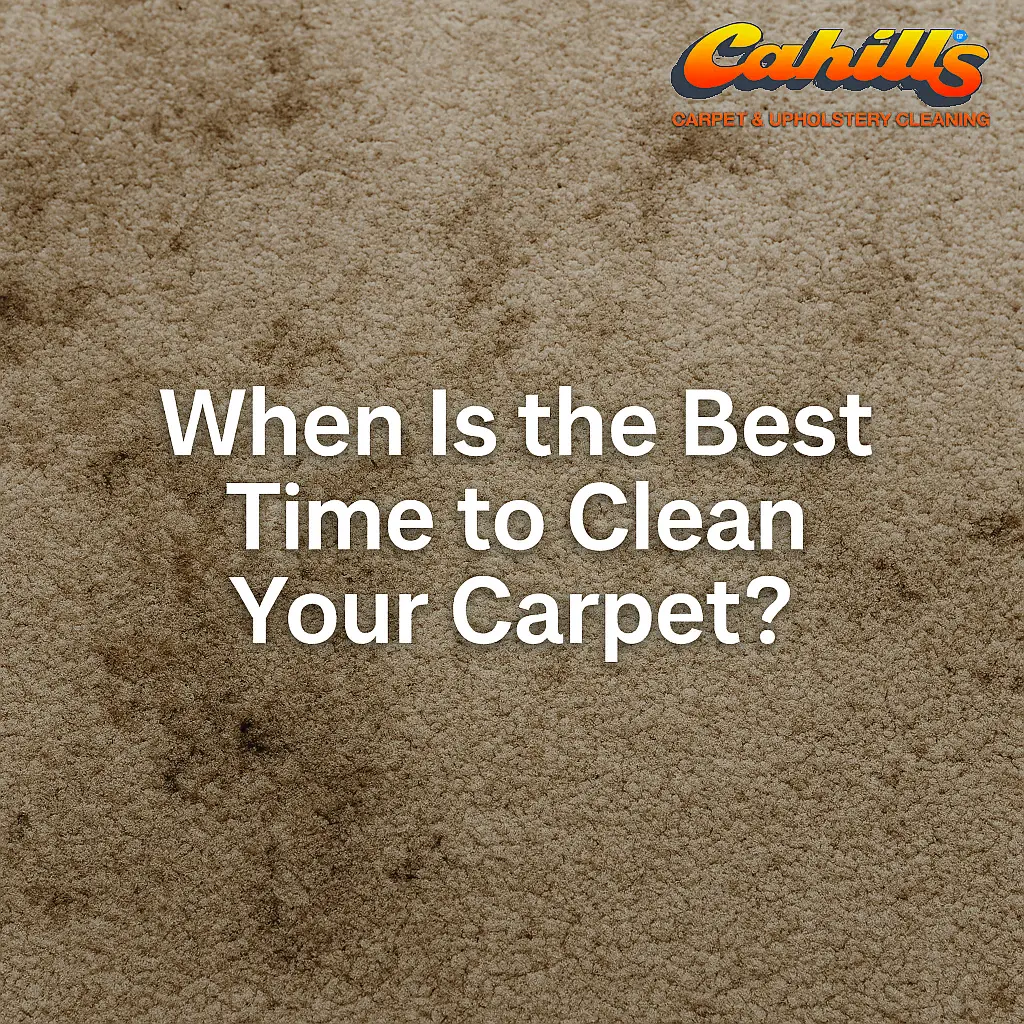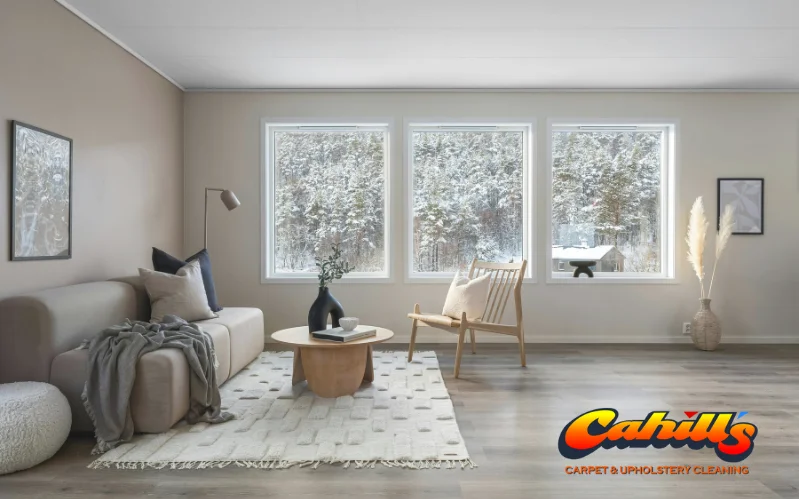Carpet cleaning plays a crucial role in reducing allergies and improving the overall air quality in your home. Understanding the impact of allergens on your carpet, the science behind carpet cleaning, and the best methods for maintaining an allergen-free carpet are key to creating a healthy indoor environment.
Understanding Allergens in Your Carpet
Carpets are cozy, comfortable, and add a touch of warmth to any room. However, they can also be a haven for allergens. Dust mites, pet dander, pollen, and mold spores have a knack for finding their way into the fibers of your carpet. Once they settle in, these allergens can cause a wide range of symptoms, from sneezing and watery eyes to congestion and even more severe reactions.
The Role of Carpets in Allergy Triggers
Think of your carpet as a sponge that collects all sorts of microscopic particles. Every step you take releases these allergens into the air, making it easy for you to inhale them. This constant exposure can lead to increased allergy symptoms, especially for individuals with respiratory conditions like asthma.
Common Allergens Found in Carpets
1. Dust mites: These tiny creatures thrive in warm and humid environments, making your carpet the ideal breeding ground. Dust mite waste particles can trigger allergic reactions in many people. Did you know that an average-sized carpet can harbor millions of dust mites? These microscopic creatures feed on dead skin cells and thrive in the cozy environment of your carpet. Their waste particles, which are the main allergen, can become airborne when disturbed, causing sneezing, itching, and other allergic symptoms.
2. Pet dander: Our furry friends bring endless joy, but they can also leave behind allergens in the form of skin flakes. These microscopic particles can become deeply embedded in the carpet fibers and provoke allergic reactions in sensitive individuals. If you have pets, it’s important to understand that their dander can easily accumulate in your carpet. Even if you diligently clean and groom your pets, microscopic skin flakes can still find their way into the carpet fibers. This can be a significant source of allergens for individuals who are sensitive to pet dander.
3. Pollen: Springtime brings blooming flowers and, unfortunately, high levels of pollen in the air. As you walk indoors, pollen can hitch a ride on your shoes and find its way into the carpet. When you step outside during allergy season, pollen particles can cling to your shoes and clothing. As you enter your home, these particles can be deposited onto your carpet, where they can stay for extended periods. This can be particularly problematic for individuals with pollen allergies, as the allergens can be easily stirred up and released into the air when the carpet is disturbed.
4. Mold spores: Excessive moisture and poor ventilation create the perfect conditions for mold growth. Once mold spores enter your carpet, they can release allergens that are easily inhaled. If your carpet is exposed to moisture, whether from spills, leaks, or high humidity, it can become a breeding ground for mold. Mold spores, which are microscopic and can’t be seen with the naked eye, can settle into the carpet fibers and release allergenic particles. These particles can become airborne when the carpet is disturbed, leading to respiratory symptoms and allergic reactions. It’s important to be aware of these common allergens in carpets and take steps to minimize their presence. Regular vacuuming, professional carpet cleaning, and maintaining proper indoor humidity levels can help reduce allergens and create a healthier environment for you and your family.
The Science Behind Carpet Cleaning and Allergy Reduction
Now that we understand the allergens lurking in our carpets, let’s explore how carpet cleaning can effectively reduce allergy symptoms.
Carpet cleaning is not just about making your carpets look clean and fresh; it also plays a crucial role in improving indoor air quality and reducing allergy triggers. The process of carpet cleaning involves various techniques that target allergens and remove them from the carpet fibers.
How Carpet Cleaning Removes Allergens
Regular carpet cleaning methods, such as steam cleaning and dry cleaning, employ powerful techniques to eliminate allergens trapped in the carpet fibers. Steam cleaning, for instance, uses hot water extraction to deep clean the carpet. The high temperature of the water kills dust mites, while the suction power of the machine removes dirt, pollen, and other allergens.
But how does steam cleaning actually work? When hot water is sprayed onto the carpet, it penetrates deep into the fibers, loosening the dirt and allergens that are embedded within. The heat from the water also kills any bacteria or germs present. As the machine’s powerful suction removes the water along with the loosened dirt, it takes away the allergens, leaving your carpet cleaner and healthier.
In contrast, dry cleaning methods use low moisture techniques that rely on specialized cleaning solvents. These solvents effectively break down and remove allergens, leaving your carpet fresh and allergen-free. The solvents are carefully applied to the carpet, agitating the fibers and loosening the dirt and allergens. Then, a specialized machine with absorbent pads is used to extract the solvents along with the dirt, leaving the carpet clean and dry.
The Impact of Regular Carpet Cleaning on Allergy Symptoms
A study conducted by the American Academy of Allergy, Asthma & Immunology revealed that regular carpet cleaning can significantly reduce allergic reactions caused by dust mites and other indoor allergens. The study found that individuals who regularly cleaned their carpets had noticeably decreased allergy symptoms and improved overall respiratory health.
Regular carpet cleaning not only removes allergens but also helps to prevent their buildup in the first place. By removing dirt, dust, and other particles from the carpet, you create an environment that is less favorable for allergens to thrive. This can lead to a reduction in allergy symptoms and provide relief to those who suffer from respiratory issues.
Furthermore, carpet cleaning can also improve the overall indoor air quality of your home. Carpets act as filters, trapping airborne particles and preventing them from circulating in the air. However, over time, these particles can accumulate and become a source of allergens. By regularly cleaning your carpets, you remove these trapped particles, ensuring that the air you breathe is cleaner and healthier. It is important to note that while carpet cleaning can be highly effective in reducing allergens, it is not a one-time solution. Regular maintenance and cleaning are necessary to keep your carpets in optimal condition and to continue reaping the benefits of reduced allergy symptoms.
Choosing the Right Carpet Cleaning Method for Allergy Reduction
When it’s time to clean your carpets, it’s crucial to select the right method to effectively reduce allergens and maintain a healthy indoor environment.
Steam Cleaning vs. Dry Cleaning
Both steam cleaning and dry cleaning methods have their own benefits. Steam cleaning provides a deep and thorough cleanse, particularly suitable for carpets heavily infested with allergens. On the other hand, dry cleaning offers a quick-drying solution, making it ideal for areas with minimal drying time.
Ultimately, the right choice will depend on your specific needs and the condition of your carpet. Consulting with professional carpet cleaning services can help you determine the best method for allergen reduction.
The Importance of Professional Carpet Cleaning Services
Professional carpet cleaning services have the expertise and tools necessary to ensure a thorough allergen removal process. They use advanced equipment and eco-friendly cleaning solutions to maximize allergy reduction and maintain the integrity of your carpet.
Additionally, professional cleaners can target specific stains and areas of concern, providing a comprehensive cleaning that extends the life of your carpet.
Maintaining an Allergen-Free Carpet
While regular professional carpet cleaning is vital, there are steps you can take at home to maintain an allergen-free environment.
Regular Vacuuming and Allergy Control
Vacuuming your carpet at least once a week can significantly reduce the presence of allergens. Look for vacuums equipped with HEPA filters, which can effectively capture and trap small particles, preventing them from being released into the air.
Remember to pay extra attention to high-traffic areas and places where dust tends to accumulate, such as beneath furniture and along baseboards. These areas are often the most vulnerable to allergen buildup.
The Role of Carpet Maintenance in Allergy Prevention
In addition to regular vacuuming, proactive carpet maintenance can go a long way in preventing allergy symptoms. Keep moisture levels in check by using a dehumidifier in humid climates and ensuring proper ventilation. Promptly address any spills or water damage to prevent mold growth, a common trigger for allergies.
Other Benefits of Carpet Cleaning
Reducing allergies is not the only advantage of keeping your carpets clean and well-maintained.
Extending the Life of Your Carpet
Regular cleaning removes deeply embedded dirt and debris that can degrade your carpet fibers over time. By investing in professional carpet cleaning, you can extend the lifespan of your carpet, saving you money in the long run.
Improving Indoor Air Quality with Clean Carpets
Clean carpets contribute to better indoor air quality, benefiting everyone in your household, especially those with allergies or respiratory conditions. Removing allergens and other airborne particles from your carpet helps ensure that you are breathing clean and fresh air.
In conclusion, keeping your carpets clean is crucial for reducing allergies and maintaining a healthy indoor environment. By understanding the allergens in your carpet, the science behind carpet cleaning, and implementing proper maintenance measures, you can enjoy an allergen-free carpet and breathe easier in your own home. Contact us to schedule a consultation.







